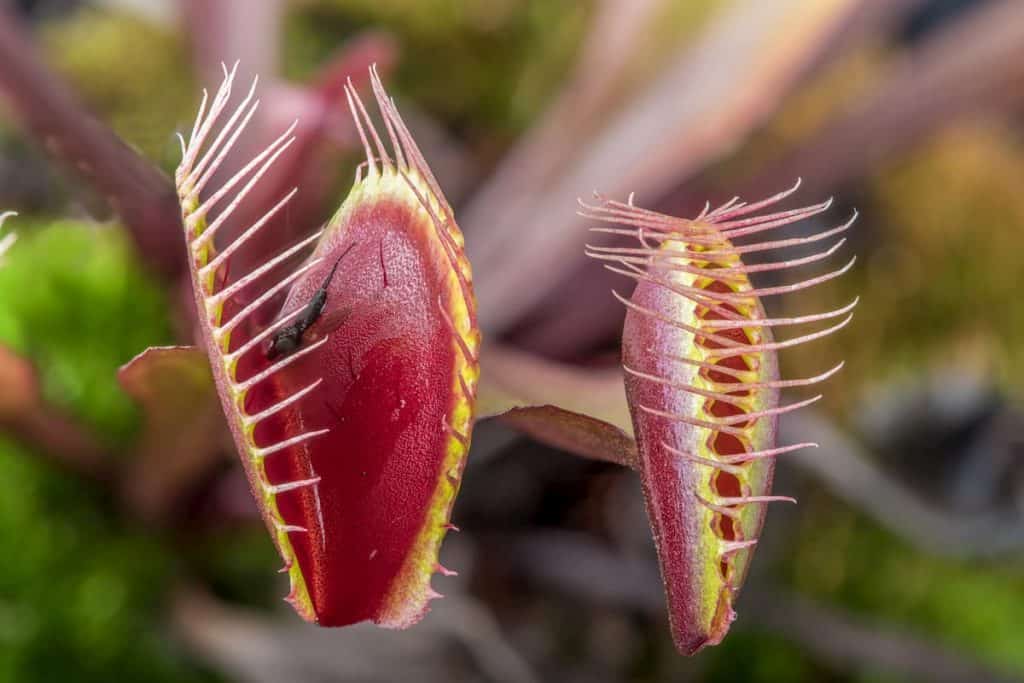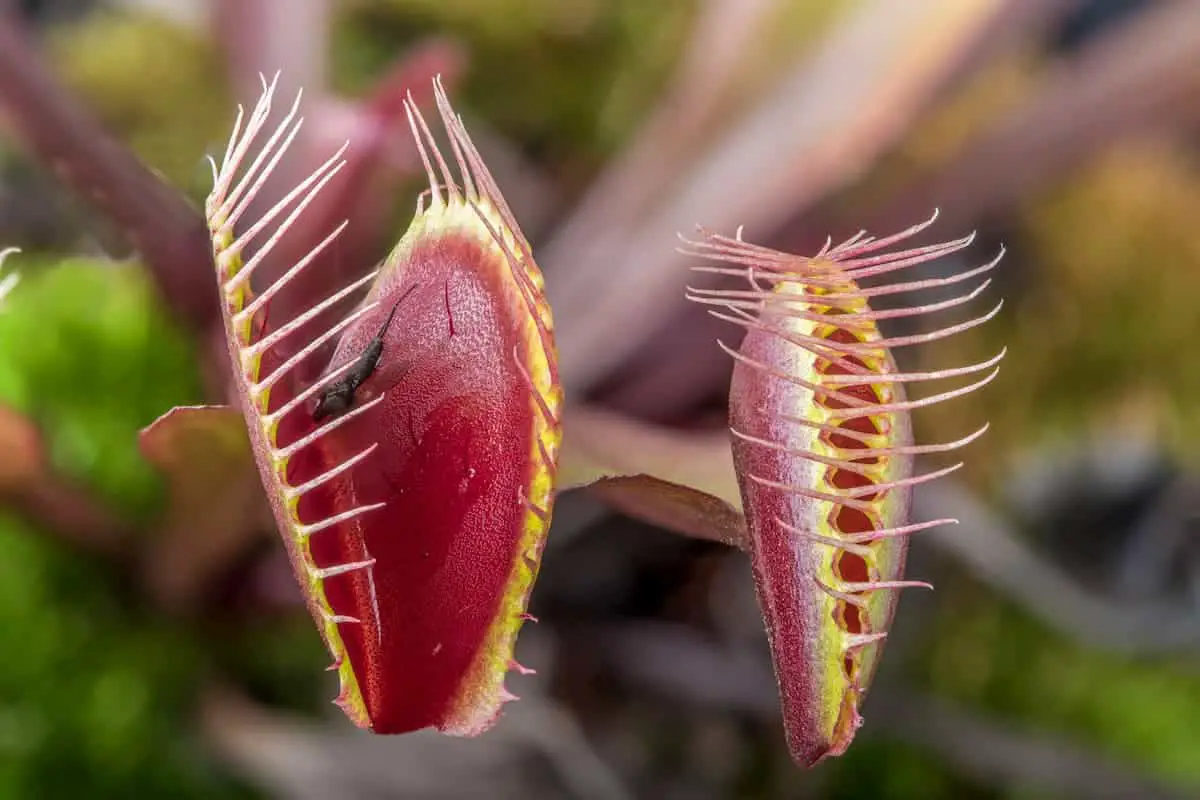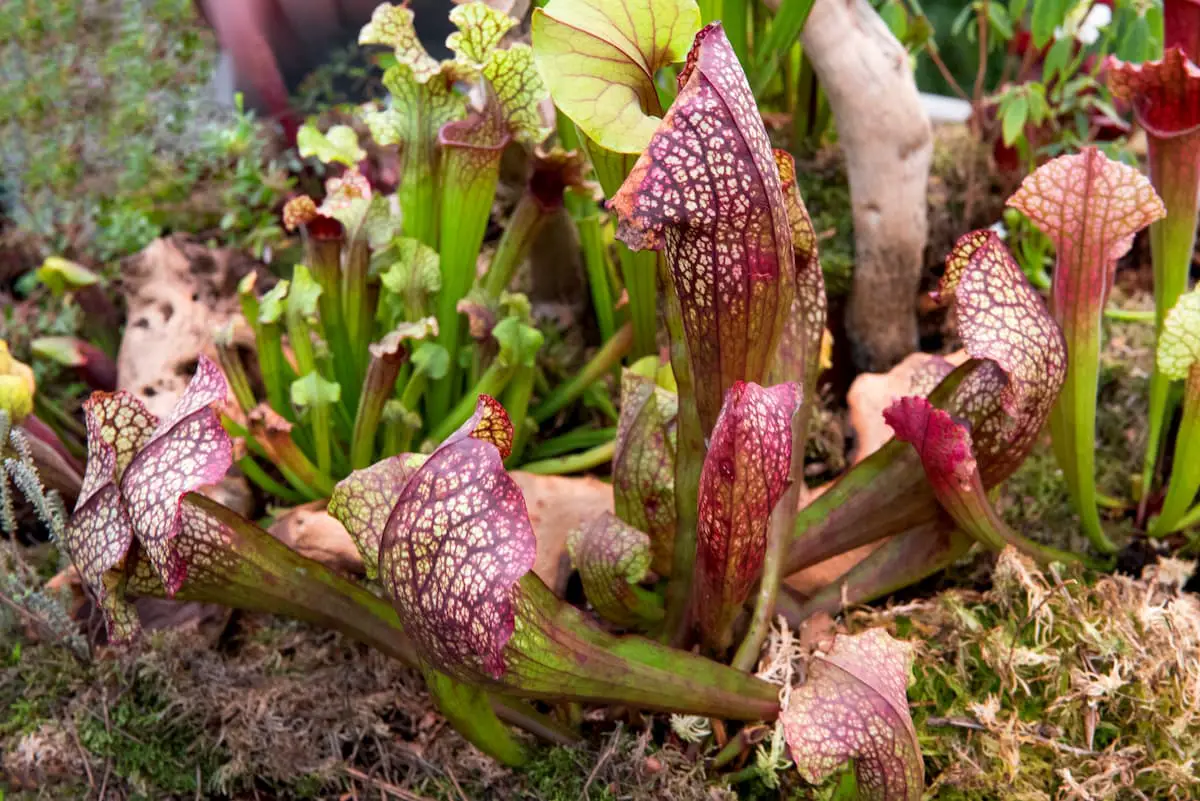From Sundew to Venus flytrap, all carnivorous plants feed on insects. But you must be wondering “Can a Venus fly trap survive without bugs?”. Of course, you are. Or not why would you be here?
Despite being carnivorous, Venus flytraps can actually go on for a long time about two-three months without eating insects. Especially if you’re growing your fly traps outside, they would get to eat insects once in a while and you are not urgently required to feed them regularly.
However, to ensure they get proper nutrition, it is recommended to feed your flytraps insects once or twice a month.
I would recommend you to read this blog until the very end as I’ve discussed the feeding habits of the Venus Flytraps in particular along with many other useful pieces of information in detail.
Can a Venus flytrap survive Without Bugs?
Venus flytraps are well known carnivorous plants. They are well known for eating insects and they have been fascinating people by doing so for many years. This fascination alone draws many people towards planting these exotic plants in their gardens.
A Venus flytrap can actually survive for a long time without eating any insects at all. However, Venus Flytraps do need insects but it’s only once or twice a month and not every day. Venus flytraps do not get nutrition from their soil. In fact, they have zero tolerance against minerals and fertilizers in their soil.
These nutrients which would be normally beneficial for other plants can actually destroy their roots completely. So, they actually depend on the sun along with insects for nutrition.
Venus flytraps originally come from swamp areas where the soil is nutrient-poor and so the plants adapted to eating insects as a means of gaining extra nutrition. However, like all plants, they also do photosynthesis and get energy from the sun.
Venus Flytraps take 3 to 5 days to digest the insects they trap, based on the insect’s size. So, there is no necessity to feed your flytraps every day. Rather it’s harmful to them. And for this reason, experts recommend feeding your flytraps once or twice a month.
So, although a Venus flytrap can survive for a long period of time without bugs, they will eventually need to eat insects to get proper nutrition. Otherwise, the plants will not have healthy growth and will fall weak.
What Do Venus Flytraps Naturally Eat?
The natural feeding habitat of Venus Flytraps is eating insects of many kinds. For instance, Venus flytraps can eat all sorts of small or medium sized insects.
For example, ants, crickets, moths etc. However, it depends on the size of the traps or “lips” they have. A small one can, for example, have small crickets, flies, ants, or small cockroaches.
On the contrary, the flytraps having comparatively larger lips or mouths can feed on bigger bugs. The big wasps, bees, centipedes, beetles, spiders, etc. all are their prey.
Unlike the name suggests, Venus flytraps diet contains about 5% fly. They mostly feed on spiders and wasps randomly crawling into their lips.
Can Venus Flytraps Eat Anything Besides Bugs?
Venus Flytraps cannot digest human foods like meat, dairy etc. Many people have this misconception that Venus flytraps can eat our everyday meats. This is absolutely wrong.
Venus Flytraps cannot eat anything besides insects and bugs. Since they cannot digest anything else. For instance, fruits will only rot the traps of the Venus flytrap. The sugar will rot the roots too.
So, they cannot eat anything else except for insects or bugs. They simply don’t have the right enzymes to digest other foods. Feeding them anything other than bugs can be fatal.
Foods like eggs, fast foods, or even sausages can rot their traps and root and even kill them. That’s why it’s best to just stay on the safe side and feed them small bugs and insects.

How Often Do Venus Flytraps Need to Be Fed?
As I’ve said before, a Venus flytrap will typically take about three to five days to digest any insect depending on its size. When Venus flytrap traps the insect, it actually does not chew it.
Rather it releases a special sort of enzyme inside its closed lips that decomposes the insect. It then sucks the energy and nutrition out of the insect’s composed body through its skin. When this is completed, the Venus flytrap releases what’s left of the body of the insect.
If your plant is kept outside, it may have already eaten a bug and started digesting it and you would not know. So that’s why it’s best to avoid feeding them every day and only feed them once in a while. Experts advise to feed them once or twice per month.
One thing to keep in mind is that during wintertime, you don’t need to feed them at all. The plants need winter dormancy meaning they should be kept in an enclosed area with little sunlight.
During this period of time, they don’t need any form of nutrition as they do not grow at all or use much energy. Dormancy is like hibernation for carnivorous plants.
Can a Venus Flytrap Eat Dead Bugs?
The Venus flytraps have three little very sensitive hairs inside their traps. Whenever an insect wiggles around inside it’s lips and touches one hair, a countdown of 20 seconds starts.
If the insects somehow manage to get outside within these 20 seconds, the plant does not close its trap and refuses to waste its energy.
However, if the bug touches two hairs then the trap closes almost instantly without any hesitation. Now, it is possible to feed Venus flytraps dead insects but you just have to make it seem like the insects are alive. Otherwise, Venus flytrap won’t eat it.

The reason behind this is that sensitive hair sends signals to the Venus flytraps that something alive is inside it only when it wiggles or moves and triggers multiple hairs.
Venus flytraps are clever as they will not use their energy to close their lips for something like a piece of bark or leaf. They will only close their lips when multiple hairs are triggered and they are sure that an animal is between their lips.
So, you actually have to trick them into thinking the dead insect is alive. Only then, the flytrap will eat it. And doing this is simple too.
Just put the dead insects inside its trap or “lip” and wiggle it a little with the help of a tweezer. After you wiggle it a bit, the Venus flytrap should close its trap and eat the dead bug.
What Size Bugs Should You Feed Your Venus Flytraps?
Venus flytraps can eat bugs of all sizes. It depends on the size of their traps. For instance, you cannot feed a baby Venus flytrap with small traps large insects like adult cockroaches. Even if you did, the small plant will most likely fail to digest it and then the result would be hazardous.
For this reason, experts recommend feeding small Venus flytraps smaller bugs like flies and ants. And as they grow, you can feed them insects even as large as a centipede.
Another thing to keep in mind is that larger insects will take more time to digest. If your plant eats a caterpillar then it would definitely take more time like even 10 days to digest it.
Whereas an ant will only take as less as two days. So, feeding them once or twice per month is more than enough.
Make sure to not overfeed them at all. Overfeeding will make the plants sick and kill them. Every year, many people accidentally kill their Venus flytraps by overfeeding. So, keep that in mind.
Final Thoughts on Can a Venus Fly Trap Survive Without Bugs
While they are carnivorous by nature and do need the additional resources to thrive fully the Venus Fly Traps aren’t close to death by going long spells without access to additional nutrients.
This allows them to survive long dormant periods where there is less insects normally in the wild, since each season can bring feast or famine this is a smart evolution.



Leave a Reply